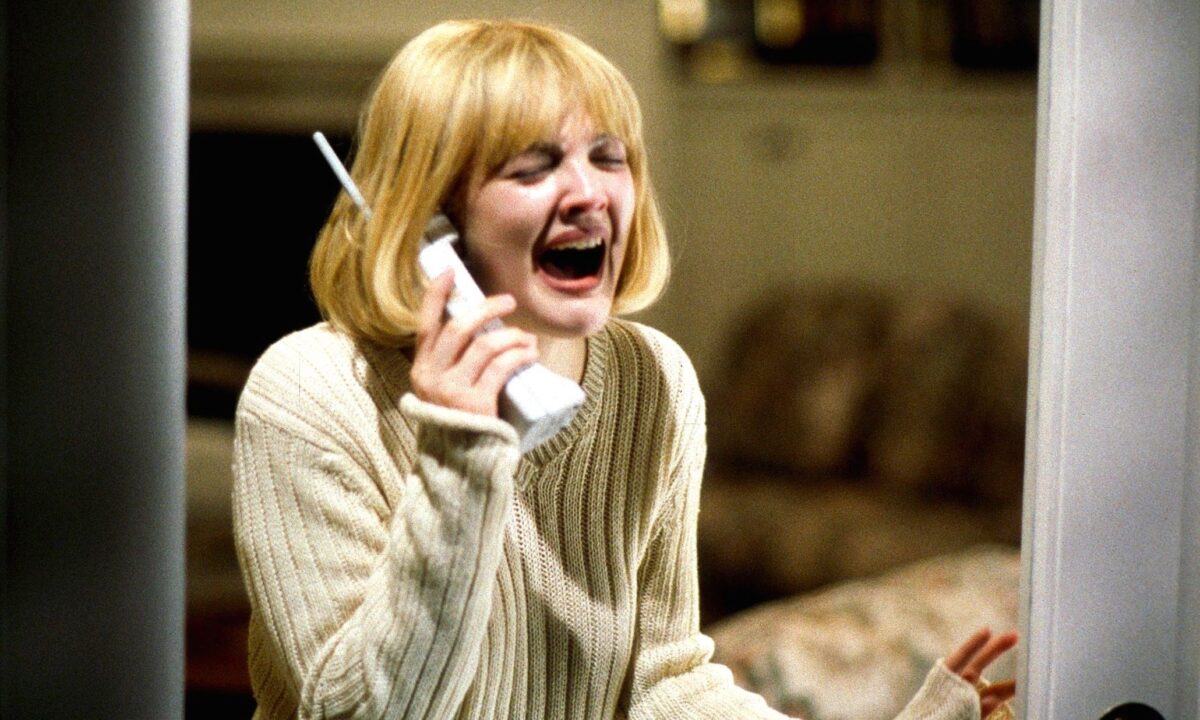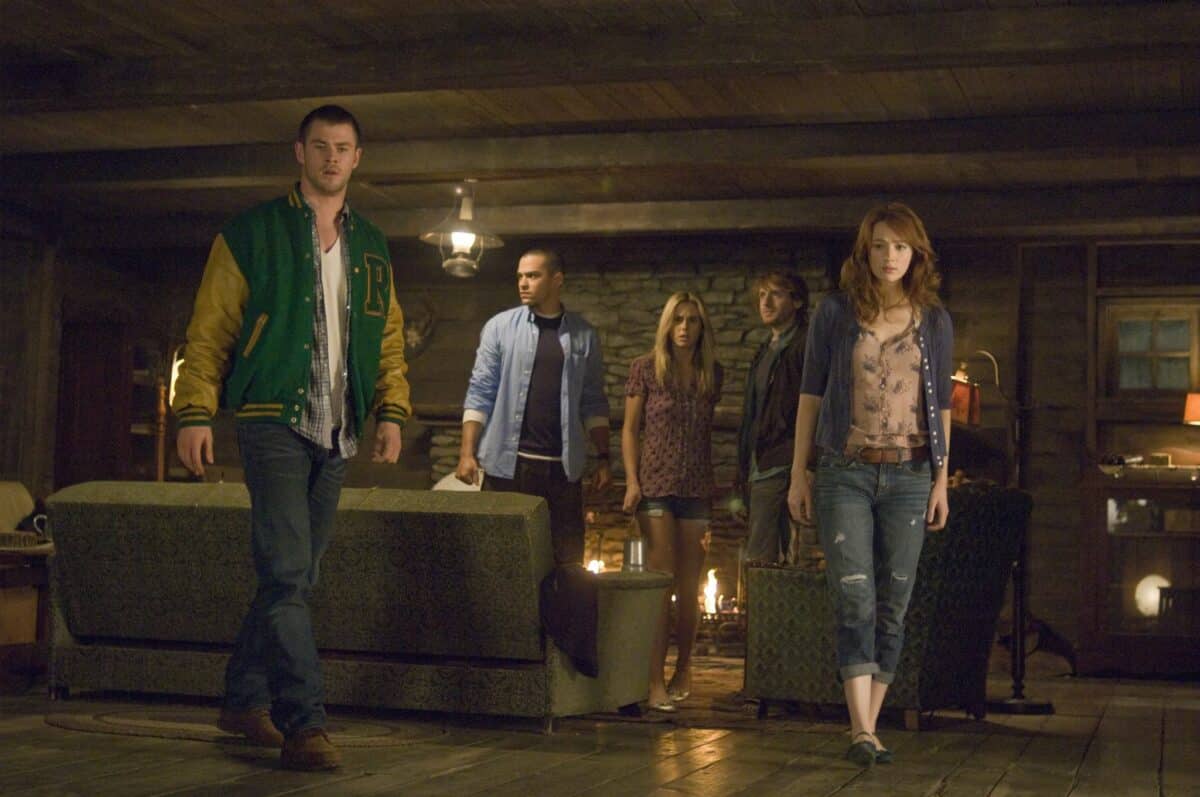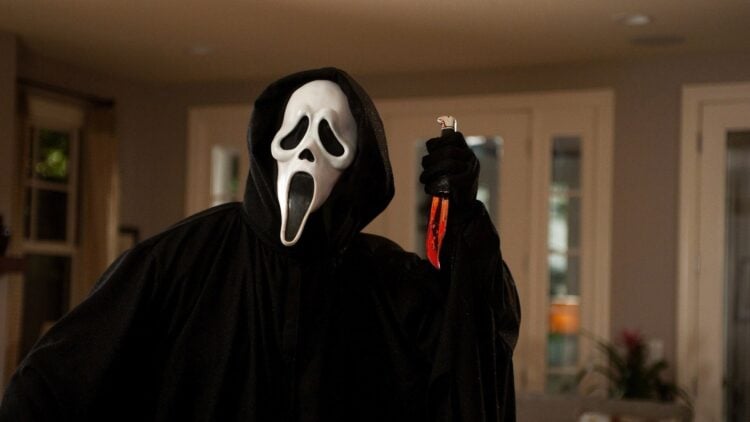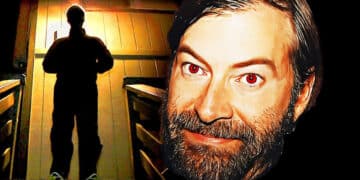The first rule of making a good horror film is that you don’t break the rules of horror movies.
Scream

It may be dated, but Scream is still one of the best horror films ever made. It’s a well-filmed production, one of the late Wes Craven’s true masterpieces. The acting is good, too. But the real gift of it is the intelligent writing, which understands exactly what genre it’s in and lives up to all the old clichés – paying tribute to them while never becoming a parody. It’s self-aware, playing on the audience’s expectations of slasher flicks while also offering a decent little mystery and something fresh.
If you’re a horror fan, then you’ve probably seen it a hundred times and are already aware of the film’s merits. And, despite all the awful Scary Movie film parodies, the Ghostface mask becoming a cliché in itself, and the awful Jay and Silent Bob crossover cameos, later on, Scream is still a phenomenal film.
One of the biggest recurring elements of Scream is how it points out there are rules to horror movies. As Randy, the video store clerk, rants, there are RULES!!! Don’t you know the RULES?!?!
Of course you do.
The Unwritten Rules of Horror Movies
If you’ve seen more than one horror film, you’ve probably picked up on the pattern already:
- If you’re a teenager, you’re probably in jeopardy to start with.
- If you’re a bully or act like a complete toolbox towards other people, the odds of your demise are even greater.
- If you smoke or drink, it’s really, really bad.
- If you do even harder drugs… well, you may as well not even get out of bed that morning.
- If you engage in any sort of sexual relationship, you’ll soon be on the business end of a machete.
The rules of a horror movie are simple enough to understand, and the message is clear: bad people have bad things happen to them. The only way to survive is to be pure in thought and deed. We know the rules, and so do the people who make these films. Unsurprisingly, they don’t mind playing by those rules over and over simply because they work so well.
On the commentary track on Freddy vs. Jason, A Nightmare On Elm Street legend Robert Englund gave a pretty good accounting of them… and his whole contribution to the topic was hilarious. He’s a funny guy who doesn’t take himself (or the genre) too seriously. There are the kids on screen, having sex and dying, drinking and dying, doing drugs and dying, and… you get the idea. Someone gets killed for wearing a baseball cap, too, and Robert Englund laughingly explains how that’s probably offensive and an unwritten rule of horror films, too.
That last rule, while it’s a joke, proves that the rules of horror movies are a little more flexible than Scream would have us believe.
New Horror Rules

By rights, when Scream pointed out the rules, it not only reinforced them but also understood the need for them to be flexible – or even broken – if horror films want to break the mould and evolve. The SAW films built on that concept, too, by creating an intricate series of mysteries to match the gorefest.
Their new rules added the concept that if we’re anything from lazy to corrupt or are wasting our potential in some way, then we’re in real trouble. Meanwhile, in even more recent horror films, you don’t have to do anything wrong at all, and you’ll still get massacred in some awful way.
Some of the best horror movies in recent years have subverted the genre itself. Two of the best have been Behind The Mask: The Rise Of Leslie Vernon and Cabin In The Woods—films that have offered innovation from imitation.
Behind The Mask, a low-budget production is probably one of the least-known films among horror fans. It’s also one of the smartest, playing on similar aspects to the film Scream. However, it tells the tale mostly from a slasher killer’s perspective, as he’s filmed by a documentary crew who are covering his murderous plans.
The filmmakers think it’s all a bad joke at first, as the charismatic Leslie shows the hard work and planning that it takes to be the next Michael Myers. From his training regime to his long-term stalking of his victims, as well as the way he adjusts the environment around him beforehand to recreate the clichés of slasher films, it’s an innovative twist on an old formula.
Joss Whedon’s Cabin In The Woods, by contrast, has a higher budget but is even more creative. Indicating that horror movie-style events must happen, some college kids who don’t fit the movie clichés are drugged and manipulated into being just that. The organisation behind it is a global network that brings to life every horror film scenario – from zombies and ghosts to nightmarish monsters and serial killers. It explains every plothole in every horror film ever and allows smarter viewers to understand why those clichés exist. It takes several viewings to truly wrap your head around and understand, but it offers plenty of references that most fans of the genre will instantly pick up on.
This week, settle in with one of your favourite horror films for some cheap laughs, thrills and scares. But just remember the horror movie rules… especially the latest one: it’s good to play by the rules, but they aren’t as set in stone as we think.








